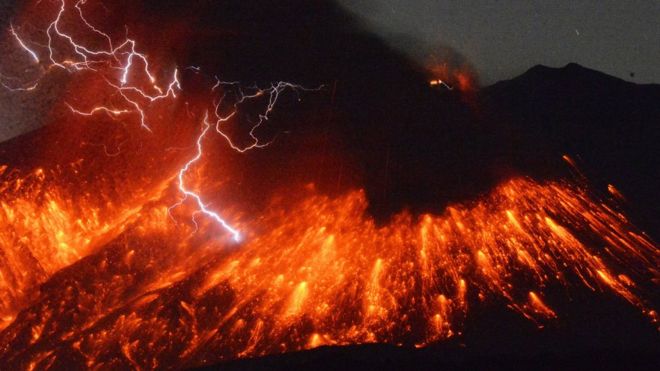
Scientists expect one of Japan’s most active volcanoes to erupt within the next 30 years with potentially devastating consequences.
In its latest report the University of Bristol warns that the Sakurajima volcano, situated on Kyushu Island just 49 km (30 miles) from the Sendai nuclear plant, is showing signs of increased activity.

BYPASS THE CENSORS
Sign up to get unfiltered news delivered straight to your inbox.
You can unsubscribe any time. By subscribing you agree to our Terms of Use
Latest Video
The volcano is also close to Kagoshima, a city of 600,000.
Research showed that 14 million cubic metres of magma is accumulating each year, which is enough to fill London’s Wembley Stadium 3.5 times over.
Experts from Bristol University and the Sakurajima Volcano Research Centre published its report on the activity of the volcano on Tuesday.
RT reports:
The volcano, which is located near the city of Kagoshima, has been erupting frequently since 1955, with the latest spectacular eruption occurring in April this year.
The last major eruption, however, happened in 1914, and claimed 58 lives. Scientists estimate that the volcano needs roughly 130 years to build up the necessary amount of magma for a major eruption.
“Storage rate implies a timeframe of ~130 years to re-accumulate enough magma for another 1914-sized eruption,” reads the report. The research team hopes their findings will help to prevent a probable disaster.
The Sendai nuclear power plant has two 890 MW reactors. The station did not generate electricity in the immediate wake of the Fukushima nuclear disaster in 2011, but it was restarted in August 2015.
The Sakurajima volcano is designated a Decade Volcano. The Decade Volcanoes are 16 volcanoes scattered around the world, which are identified by International Association of Volcanology and Chemistry of the Earth’s Interior (IAVCEI) as being worthy of particularly close study. All of them have a history of devastating eruptions and close proximity to populated areas.
The volcano has been classified under a Level 3 (out of 5) alert by the Japan Meteorological Agency since September 2015. This level means the volcano is active and should not be approached.


